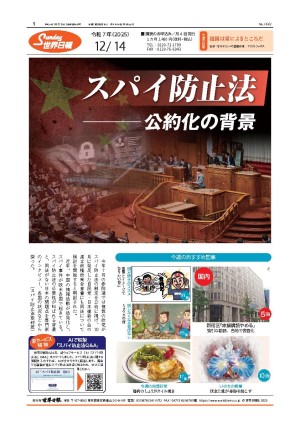ウェブ上の創意工夫が慈善団体の寄付者集めを助ける Ingenuity on web helps charities reach donors
「アマゾン効果」と呼ぼう。
オンライン小売業者アマゾンがマウスをクリックするだけで簡単に商品を購入できるようにしたように、慈善団体も寄付金を募るためにインターネットを活用するようになっている。
非営利組織向けのソーシャルメディア情報サイト「善のための非営利技術」によると、2016年5月以降、オンラインによる個人の寄付は約40%増加し、1回の寄付金額も18%増えた。昨年、オンラインで行われた慈善寄付は2億8284万8736㌦に上るという。
これを踏まえ、多くの教会や慈善財団がインターネットプラットフォームに飛び乗っている。だが、それぞれの個別のメッセージを広めていくには、そのアプローチを工夫しなければならない。
アシャ・カラン氏が組織した「ギビング・チューズデー」は、「ブラック・フライデー」「サイバー・マンデー」という祝日のショッピング日に続き、感謝祭後の火曜日に慈善団体への寄付をソーシャルメディアを利用して呼び掛ける年1回の国際的運動だ。カラン氏は、インターネット時代ではドア越しにお金を集めることだけが成功ではないと指摘する。
「組織がコラボレーション(協力)とクリエイティビティー(創造性)に重きを置くことが今のポイントだ」と、カラン氏は語った。
「フェイス・ダイレクト」のCEO(最高経営責任者)であり創設者のブライアン・ウォルシュ氏は10年前に組織を設立して以来、創造力を働かせ、全米のカトリック教区と協力して信者がオンラインで簡単に献金できるように手助けしてきた。
強力なカスタマーサービスは、フェイス・ダイレクトの優先事項でもある。フェイス・ダイレクトは、カトリック教会が献金皿を回すのではなく、均一料金での完全なデジタルプラットフォームの利用へ容易に移行できるようにすることを目指している。
ウォルシュ氏の革新的なビジネスは最近、処理された寄付金が10億㌦を超え、カトリック部門では常にこの分野のナンバーワン企業として名前が挙げられる。
ウォルシュ氏はワシントン・タイムズ紙に「5月時点でユーザーの支持率は90%だ」と指摘。「最終的に(自動引き落としが)継続性の故に教会や非営利組織の安定に役立つ」と語った。
ウォルシュ氏は、教会に寄付する手段は10年前と今日では全く異なると指摘する。
「14万3000人以上のユーザーがいるが、その大部分が60歳以上だ」とウォルシュ氏。「小切手を書いているか尋ねてみると、ほとんどの人がもうしていない」
カラン氏によると、これは特に(2000年以降に社会人になった)ミレニアル世代に当てはまる。彼らの多くは小切手帳さえ持っていない。ギビング・チューズデーの原動力となっている層は若者だ。
ギビング・チューズデーがソーシャルメディアを重視するのは、さまざまなソーシャルメディアを使いこなす若者と、フェイスブックをよく利用する傾向があるベビーブーマー世代を引き付けるためだ。
非営利組織のマーケティング担当者にとって、この動きは理にかなっている。ソーシャルメディア利用者の割合は世界全体で2018年までに33%に達する見通しだからだ。
「ギビング・チューズデーの実験は、猫の動画が拡散するのと同じように、慈善行為も拡散できるかどうかを見ることだった。とても幸いなことに、その答えは『イエス』だ」と、カラン氏は語った。
(6月15日付)
Call it the Amazon effect.
Just as the online retailer has made purchasing items as easy as clicking a mouse, charitable organizations increasingly are using the internet to solicit and collect donations.
Since May 2016, individual online donations have increased by about 40 percent, and the amount per donation increased by 18 percent, according to Nonprofit Tech for Good, a social media resource for not-for-profit organizations. The network reported that $282,848,736 worth of charitable donations were made online last year.
With this in mind, many churches and charitable foundations are jumping on board the internet platform. To get their individual messages across, however, means getting creative in their approach.
Asha Curran is the organizer of #GivingTuesday, an annual global movement that uses social media to urge people to donate to charities on the Tuesday after Thanksgiving, following the holiday shopping days of Black Friday and Cyber Monday. She says that in the age of the internet, success is not just about getting the dollars through the door.
“The point, now, is for organizations to put an emphasis on collaboration and creativity,” Ms. Curran said.
Brian Walsh, CEO and founder of Faith Direct, got creative with his organization since its inception about 10 years ago, and has ever since been collaborating with Catholic parishes across the nation to help their members easily give online.
Strong customer service is also a priority for Faith Direct, which aims to make it simple for Catholic churches to transition from passing the offering plate to using a completely digital platform for a flat rate.
Mr. Walsh’s game-changing business recently surpassed $1 billion in processed donations, and is typically named as the No. 1 company of its kind in the Catholic sector.
“As of the month of May, we have a 90 percent approval rating by our users,” Mr. Walsh told The Washington Times. “Ultimately [automatic withdrawals] makes for a more stable church or nonprofit, just because of the consistency.”
Mr. Walsh says the means of giving for the church are completely different today than they were even 10 years ago.
“We have over 143,000 users who are, largely, over 60 years old,” said Mr. Walsh. “You ask them about check writing, most of them are not doing it at all anymore.”
This is especially true for millennials – many of whom do not even own a checkbook, said Ms. Curran. She would know, since young people are the driving demographic for #GivingTuesday.
#GivingTuesday puts an emphasis on social media to attract young adults who consume multiple forms of social media and baby boomers, who tend to have a large Facebook presence.
This makes sense for nonprofit marketers, as the projected global percentage of social media users is 33 percent by the year 2018.
“Our experiment with #GivingTuesday was to see if you could make generosity go viral in the same way a cat video goes viral,” said Ms. Curran. “The answer is very happily ‘yes!'”
June 15, 2017





